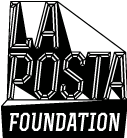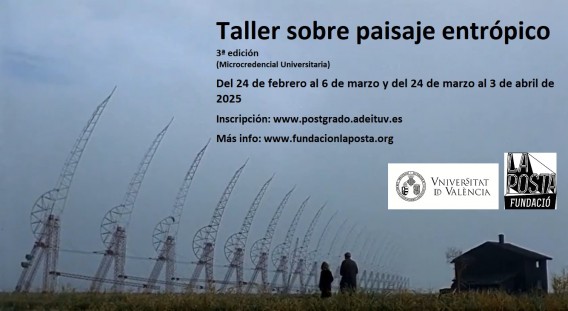Workshop on Entropic Landscape
3rd edition
Now part of the ADEIT – Universitat de València offer.
(University Microcredential)
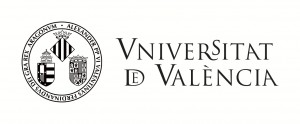

Registration here
https://postgrado.adeituv.es/es/cursos/area_de_humanidades-3/paisaje-entropico/datos_generales.htm
Introduction: about the landscape
One of the most relevant documents on the landscape is the European Landscape Convention, made in Florence in 2000. This Convention includes, within the concept of landscape, also the everyday or degraded landscapes, which are, precisely, those that characterize the suburban territories in which an important part of our existence takes place. This workshop refers to these landscapes.

Stills from “Il Deserto Rosso” (1964), Michelangelo Antonioni.
The European Landscape Convention meant formalizing a change that was taking place in the way of perceiving the landscape, a consequence in turn of a change in the conceptualization of the same. In particular, and as noted in the Recommendations for the application of the European Landscape Convention (2008), reference is made to the transition from conceptualising the landscape almost exclusively as an asset that forms part of the collective heritage, to seeing it within the framework of sustainable development (therefore, also incorporating cultural, social and economic factors), and, from this perspective, as the place of sensorial and emotional experience.
From this new perspective, the methodological issues for the treatment of the landscape are of particular interest, which is not limited to protection (which corresponds to the consideration of the landscape fundamentally as an asset, with a tendency to equate it with the public domain), but also refers to planning and management. This is a terminology derived from land planning, a discipline to which the treatment of the landscape has traditionally been linked, but we could well speak of identification and characterisation of the landscape and programming of actions, a terminology more appropriate to the cultural perspective adopted here.
With regard to methodology, which is the aspect that interests us most – for the identification and characterisation of landscapes – the Recommendations to which we are referring show that “the various practices already in progress, experimental or usual, in the different European States, reveal a diversity of approaches in the production of knowledge that are a reflection of the diversity of cultural conceptions. However, there is a clear awareness of the inadequacy of the most used theoretical and methodological instruments for the needs of action. Too often they respond to compartmentalised disciplinary universes, while the landscape demands responses appropriate to the transversal time and space scales capable of satisfying the need for knowledge of permanent transformations at a local level” (pp. 13 and 14). In this context, this workshop proposal is formulated, which seeks, starting from a methodological approach that has the endorsement of several fields of knowledge (the first to be taken into account is that of the visual arts ―not in vain the first theoretical formulation of the concept of landscape occurred in the field of Fine Arts, where it continues to play a determining role, now reborn in the field of expanded sculpture―, as well as architecture, geography and others), to generate a powerful school of thought that is capable of leading the action in relation to the landscape in several areas and especially in the institutional one, in particular with regard to obtaining the declaration of Historic Site or Cultural Landscape (specifically those of a symbolic nature). People to whom the workshop is addressed
As regards the profile of the participants, the workshop is aimed primarily, although without excluding other groups, at artists, architects or geographers who, either from activism or from an interest in contemporary cultural assets (two issues often closely related), want to give it a professional projection by directing their concerns towards an analysis of the characteristics of the territory and the landscape in order to highlight its historical, ethnological or anthropological values, and thus be in a position to prepare the documents, reports, etc., necessary to obtain from the Administration the declaration of a place as a Historic Site or Cultural Landscape (particularly symbolic), in the context of a growing number of clients interested in these institutional declarations with variable purposes.
Also agricultural engineers, botanists or art historians interested in the analysis and valorisation of the landscape.
On a specific expertise for the study and analysis of landscape and territory. The concept of entropic and dialectical landscape.
The workshop focuses, as indicated in the introduction, on the acquisition of a specific methodology and expertise for the analysis of landscape and territory oriented towards action. In particular, of the everyday, even degraded, landscapes that characterize the suburban periphery in which our existence mainly takes place (with its characteristic overlapping of large infrastructures, abandoned fields left to rot, “clandestine” waste dumps in broad daylight, vestiges of a past civilization that demand the establishment of links with the present time).
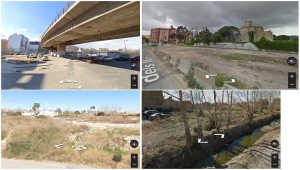
From left to right and from top to bottom: 1) Giorgeta overpass, 2) Carrer de l’Alqueria dels Moros (in the Huerta to the north of the city), 3 y 4) Camí dels Rochs and Entrada de Pedròs (in the Huerta to the south of the city). The latter recalls the landscapes that Robert Smithson explored for his work “A Tour of the Monuments of Passaic, New Jersey”, where he played as a child. A work to which we are going to pay special attention.
In a preliminary manner, we can define the specific expertise that the workshop is based on, as that form of analysis of the characteristics of a territory and a landscape through the recording and interpretation of its identity values, traces of the memory deposited in them, traces and indications of human actions that have endowed them with a symbolism that transcends the contingency of the present time, and, in some cases, for the intervention projected in it, which seeks to enhance the symbolic aspects present in that territory, through the development of specific work for the site (normally signage, or axiomatic constructions, or other types of actions in the field of expanded sculpture), or, simply, the analysis is carried out in order to facilitate the administrative process for obtaining the competent authorities’ recognition as a Historic Site or Cultural Landscape (particularly symbolic ones).
The reference that can inspire both lines of action with a fairly high level of consensus, is the work that Robert Smithson developed during his short life. The most relevant in this regard, for what is of interest now, are:
― “A tour of the monuments of Passaic, New Jersey” (1967)
― “Frederick Law Olmsted and the dialectical landscape” (1973)
Both can be read ―and the images included in them seen―, in Robert Smithson. The Collected Writings, edited by Jack Flam, University of California Press, 1996. In addition, as regards in particular “A tour of the monuments of Passaic, New Jersey”, it has also been published by the architects’ publishing house Arquitectura y fantasía, La Plata, Argentina, in 2022 (in english), which gives us an idea of the transversality of their thinking.
In the first of the writings we have cited, Robert Smithson refers to the landscape that constitutes the object of his study as an “entropic landscape”, and, in the second, he refers to this same object of study as a “dialectical landscape”. Hence the name of the workshop we have organized.

Monuments of Passaic, New Jersey, by Robert Smithson
Workshop objectives and means to achieve them
The workshop objectives could be summarized as follows:
1) the definition of a series of concepts that are being used in practice with diverse terminology and referring to different meanings, all of which should be organized, in particular with regard to the application of the expertise to be deployed in a work of identification and characterization of entropic or dialectical landscapes;
2) the definition of the instrument for the knowledge, intervention, design and management of Historic Sites and symbolic Cultural Landscapes for their enhancement and updating or improvement;
3) Application of all this knowledge to a specific case.
4) the promotion of the values implicit in the Historic Sites and the symbolic Cultural Landscapes, based on an inventory/catalogue of the most relevant ones,
5) (to achieve excellence) to put the emphasis on those that are integrated in international cultural landscape units identified expressly for that purpose, since this can lead to the establishment of international networks, which must result in the best programming of actions in relation to the identified landscapes and, ultimately, to the benefit of a better achievement of the general objectives of the work on the landscape and specific objectives of the workshop.
Instructors participating in the workshop
Participating in the workshop:
― Guillem Cervera Pascual, PhD from the University of Barcelona with the thesis “The obsolescence of the city, urban renewal and its link with growth” (2012), after completing doctoral courses at the UPV; He has worked for years in the Administration of the Generalitat Valenciana, in the Department of Territorial Planning and Landscape; he is a qualified lawyer of the Generalitat; his last posting was in Brussels, in the European Council, in the working group on the environment; he is a visiting professor in the Master of Advanced Architecture, Landscape, Urbanism and Design, of the UPV; he is currently pursuing doctoral studies at the Faculty of Fine Arts of the University of Murcia under the direction of Pedro Ortuño, with a research project on an epic Spanish cultural landscape, which is to give rise to a creative documentary.
― Matilde Igual Capdevila, landscape architect, has focused her work on the analysis phase of the landscape and on the marking of the landscape with results loaded with symbolism that she takes from the territory itself that is the object of examination. Her work with the architect Luis Hilti (Zürich) & Studio Venice: Atlas of Remoteness Liechtenstein. Walking The Line from Rheinau, Liechtenstein, to Siba Brünna, Liechtenstein, Institute for Linear Research, Triesen, Liechtenstein, 2021.
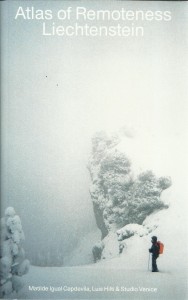
― Javier Rivera Linares, architect, PhD from the Polytechnic University of Valencia (UPV) with the thesis “Towards a new identity of the landscape” (2015), directed by Enric Batlle i Durany (UPC) and Fernando Gaja Diaz (UPV); designer of interventions in public spaces such as the Reorganization of the Access to Gulliver Park; assistant professor in the Department of Architectural Projects at the Polytechnic University of Valencia; prolific author, both of books and articles for scientific journals; lecturer; She has also carried out interventions in museum spaces, such as “A Garden in the Museum!” at the IVAM Valencia, on the occasion of International Museum Day 2023.
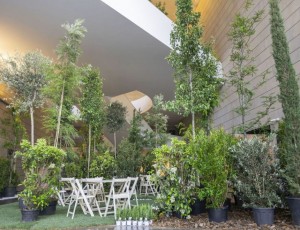
“A Garden in the Museum!” at the IVAM Valencia, on the occasion of International Museum Day 2023, by Javier Rivera and others.
― Theresa Wilshusen (Kansas City, Missouri, currently based in Valencia), artist, familiar with the work of Robert Smithson in an extensive and intense way. “Theresa often experiments with various materials, manipulating them to achieve a certain desired result or simply explore a new medium. She likes to incorporate maps and texts into her work as an identifier that the viewer can relate to. Her work is often motivated by geographical images as well as found natural objects” [https://www.twilshusen.com/about-tw ].
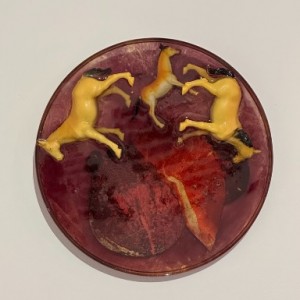
― Ignacio Díez Torrijos is an Agricultural Engineer and Master in Landscape Architecture. PhD from the Polytechnic University of Valencia. 2015
From 2015 to 2023 he has developed his professional work as: Coordinator/founder of cercle. www.cercle.es. He is currently an assistant professor in the Department of Urban Planning in the area of Urban Planning and Land Management, Polytechnic University of Valencia.
He has developed work in the field of landscape such as the following: Turia Garden Plan, Valencia City Council, 2024. Special Protection Plan for Ciutat Vella de Valencia, approved in 2020, Valencia City Council. Sectoral Plan for Green Infrastructure in Andorra, approved in 2018, Government of Andorra. Alzira Green Ring, 2017, Alzira City Council. Territorial Action Plan for the Protection of the Huerta de Valencia, 2010. Green Infrastructure Plan for the Coast of the Valencian Community, approved in 2018, Ministry of Housing, Public Works and Territorial Vertebration, Generalitat Valenciana. Landscape requalification project for the area around Serrería and Estación del Cabanyal, 2023, Valencia City Council. Landscape project for the historic garden of the Blasco Ibáñez Museum (Valencia), 2020.
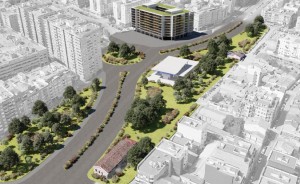
Landscape requalification project for the area around Serrería and Estación del Cabanyal, 2023, Valencia City Council.
― Jaime Escribano Pizarro, Graduate in Geography (2004) and European Doctor in Geography (2010) from the University of Valencia (UV). Professor in the Area of Regional Geographic Analysis of the Department of Geography at UV (2023), member of the Rural Development and Public Policy Evaluation Group UDERVAL (GIUV2015-214), integrated into the Interuniversity Institute for Local Development (IIDL). Member of the research team of the R&D&I project of the National Plan of the Ministry of Science and Innovation: “Depopulation in Spain: from demographic challenge to territorial challenge (PID2020-114554RB-I00)”, and of the project of the Ministry of Innovation, Universities, Science and Digital Society of the Generalitat Valenciana: “Local development processes in rural environments: new dynamics and territorial challenges (AICO/2021/104)”. Co-Editor of “AGER: Journal of Studies on Depopulation and Rural Development”, and secretary of the Rural Geography Group of the Spanish Association of Geography (AGE).
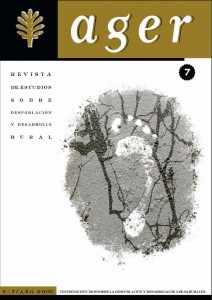
― Rocío de los Llanos Herrera Flores, Graduate in Fine Arts, Specialization in drawing/Technical graphic representation, UPV. Erasmus Scholarship Accademia di Belle Arti di Venezia. Course of Pedagogical Aptitude (C.A.P.), Institute of Educational Sciences UPV. Technical Engineer in Industrial Design, ETSID UPV. Press illustration workshop, UIMP, Santander. 2014/2016 Master’s in Artistic Production, Faculty of Fine Arts UPV. Training Collaboration Grant “Media Resources Laboratory” Department of Drawing UPV. 2018/2024 PhD in Landscape and Environment (Passaggio e Ambiente), Università degli Studi di Roma La Sapienza.
2005/2006 Collaboration in IVAM educational workshops. 2011/2012 Implementation of the editorial line established for the different PRISA group radio stations within their printed product. 2012/2013 Artistic Director Risky Digital Marketing Studio S.L. 2018 Teacher of Vocational Education and Training (VET) Arts and Crafts, Junta de Castilla La Mancha. 2023 to present: Intermediate research support technician for the RuTIC project “Literature and Mediterranean landscape”, University of Valencia.
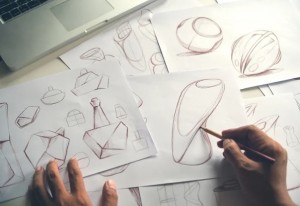
― Adrià Besó Ros, Graduate in Geography and History (1990) and PhD in Art History (2010) from the University of Valencia. He has developed his professional activity as director of the Museu Comarcal de l’Horta Sud Josep Ferrís March, since its creation in 1996, until 2013. During this entire period he has combined this activity with teaching as an associate professor in the Department of Art History at the University of Valencia. In 2013 he obtained a position as assistant professor and since 2018 he has been a full professor. Elected member of the faculty since 2014. Between 2018 and 2023 he has been director of the cultural heritage area at the University of Valencia.
His lines of research focus on the study of some manifestations of cultural heritage related to the landscapes in which they are integrated, such as popular architecture, industrial architecture and public works heritage, on which he has published various contributions in specialized journals and collective works.
He has worked on the preparation of inventories of immovable ethnological heritage (1994) and industrial heritage of the Valencian Community (1997-2005) and has been part of drafting teams of various territorial planning instruments, special plans, master plans for monuments and municipal catalogues of protected assets and spaces, and has been the author of a good number of reports on the protection and management of immovable cultural assets (such as that of the Historic Site “Elca, the house of the poet Francisco Brines”). He has participated in more than a dozen research contracts and in several R&D projects financed by public calls.
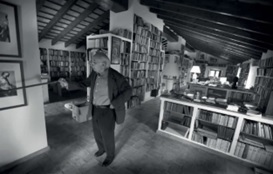
“Elca, the house of the poet Francisco Brines”, a Historic Site declared by the Generalitat Valenciana by Decree of January 27, 2023.
― Lamia Mohacht (1983- Rabat, Morocco) Graduated in Fine Arts with a specialization in Drawing from the Polytechnic University of Valencia, and has a master’s degree in Photography, Art and Technique from the same university, she is the founder and director of Volta Art Gallery, a gallery specialized in the representation of emerging artists from Spain, with a particular focus on the art of North Africa and the Middle East. Before founding the gallery, Lamia developed her career as an artist, which gives her a unique perspective in understanding both the needs of creators and those of artistic managers. This double experience allows her to approach projects from a more complete and enriching perspective. In his participation in the Workshop on Entropic Landscape, with the conference “New Mappings in Contemporary Art”, he has selected projects by artists with whom he has worked, which are aligned with the theme of the workshop, with special interest in the project of the artist Sara Gurrea, whose work delves into the Carmen neighborhood in Valencia.
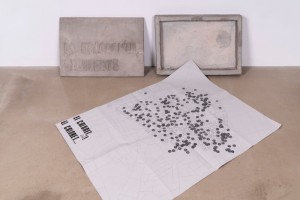
Sara Gurrea: “The location, excellent.” Following the footsteps of tourists in the touristified city.
― Luis Pablo Martínez Sanmartín, Graduate in Geography and History (specializing in Medieval History), DEA in Modern History from the University of Valencia, DEA in Art History from the University of Murcia and University Master’s Degree in Mediation and Management of Heritage in Europe from the UNED. Since 1998 he has been inspector of movable heritage for the General Directorate of Valencian Cultural Heritage. He has been coordinator for the Generalitat Valenciana of the candidacy of the Palmeral de Elche for inscription on the World Heritage List (inscribed on November 30, 2000); of the candidacy of the Misteri o Festa d’Elx to be proclaimed as a Masterpiece of the Oral and Intangible Heritage of Humanity (proclaimed on May 18, 2001); of the joint candidacy of the Consejo de Hombres Buenos de la Huerta de Murcia and the Tribunal de las Aguas de Valencia to be inscribed on the Representative List of the Intangible Cultural Heritage of Humanity (registered on September 30, 2009). In 2013 he graduated in Social and Cultural Anthropology from the Miguel Hernández University. Professor of the Official Master’s Degree in Local Development and Territorial Innovation (DELEITE-UA). Organizer of the 3rd École d’été, held in June 2016 at the Villena University Headquarters of the University of Alicante, with the title: “New museums, cities and tourism”. Since June 2023, head of the Exhibitions Section of the General Directorate of Culture.
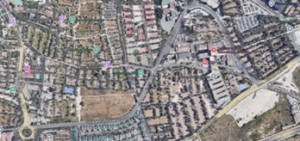
The palm groves of Elche in the so-called Palmeral, with their characteristic orthogonal shape following the layout of the irrigation ditches.
― Sara María Rodríguez Gamarra, Peruvian artist living in Valencia, Master in Photography Art and Technique (Polytechnic University of Valencia 2021), social communicator (University of Lima, 2007), studied fashion photography (Espacio Buenos Aires 2015) in addition to having taken various workshops with artists such as Eugenio Recuenco, David Trullo, Félix Hernández among others.
Her interest in photography began when she discovered conceptual photography as a means of expression. She has exhibited her personal projects in various cultural centers and galleries in Lima and abroad: Centro Cultural La Noche: “Diario Personal” (2009), “Late la Noche” (2009 and 2010); Galería de Arte Anama: “Fragmentos”; Centro de la Imagen: “Photosíntesis” (2011); Galería Sala 58: “Mujer” (2014); Euroidiomas Foundation Bazart: collective 2015, Euroidiomas Foundation “Solazar” (2016 solo); University of Lima “Family Portraits” (2017); The Naughty Show Exhibition (2017 – Miami).
― Lucía Firbas has just completed a double degree in anthropology and French literature at Rutgers University (New Jersey, USA). After her training in humanities, and an internship in the planning department at the municipality of Princeton (NJ), she sought to acquire technical skills for environmental and territorial management with a master’s degree at the University of Valencia (TGMAT). She hopes to continue her learning in the field of human geography, dealing with the integral intersection of the physical environment with the lived experience of its inhabitants.
Program
The workshop will take place at the Fundación La Posta, on Calle Pintor Fillol, 2, Valencia; at the Botanical Garden of Valencia, at Calle Quart, 80, Valencia; and at the Faculty of Geography and History, Avda. Blasco Ibañez, 28, Valencia; between February 24 and March 6 and March 24 and April 3, 2025 (16 days in total), from Monday to Thursday from 4:30 p.m. to 8:00 p.m.; and, after the Easter break, depending on the time required by the participants to implement the agreed public participation plan (including the exhibition), a date will be set for the inauguration in June 2025 (60 hours in total).
All according to the following program:
- LEGEND
- “Learning to look”
- “Land and landscape management”
- “Specific tools for the development of the work”
- Guided field visit
- Group work or workshop
- Homework
― Monday, February 24, 2025:
4:30 p.m.: Introduction by the founder of the Workshop.
16:45 hours: Presentation by Matilde Igual Capdevila: “Straight lines and detours: exploration and experimentation in remote landscapes”.
17:45 hours: Case presentation; debate with participants.
18:15 hours: Presentation by Guillem Cervera: some cases on a way of looking at the territory and the landscape: two fundamental works by Robert Smithson: “A tour of the monuments of Passaic, New Jersey” (1967) and “Frederick Law Olmsted and the dialectical landscape” (1973)
19:30 hours: Initial debate on the entropic landscape.
― Tuesday, February 25, 2025:
16:30 hours: Lecture by Javier Rivera Linares: “Identity of the landscape? the limit as an opportunity”.
17:30 hours: Case presentation; debate with participants.
18:15 hours: Presentation by Theresa Wilshusen: “The representation of identities in the small details that define space and in their interrelation with what is built in the territory”.
19:15 hours: case presentation; debate with the participants.
― Wednesday, February 26, 2025:
16:30 hours: guided field visit by Matilde Igual Capdevila: “A space-time walk Faitanar-Sociópolis-La Torre”.
― Thursday, February 27, 2025:
16:30 hours: guided field visit by Theresa Wilshusen: “The straight line that takes us to the end of the city”, a straight line route from the Colón metro station to the French Entrance, which will allow us to see how the layers of the city accumulate throughout history.
― Monday, March 3, 2025:
4:30 p.m.: Presentation by Guillem Cervera Pascual: “Historic Sites and Cultural Landscapes (with special reference to symbolic ones), in international, Spanish and Valencian regulations”;
6:00 p.m.: Presentation by Guillem Cervera: “Contributions to the methodology for the declaration of a Historic Site or Cultural Landscape, from the artistic current Art of the Territory (Public Art, Artistic Activism, Spurensicherung [Traces of Memory], Land Art, the “geographic turn”): recovery of vestiges; examples”.
19:30 hours: Presentation by Guillem Cervera and Lucía Firbas, animation for the elaboration of exercises of gaze, appreciating the entropy in the territory and the landscape, and its materialization in different formats, opening an internet communication channel for queries about the public participation process and, in particular, about the exhibition for this purpose.
― Tuesday, March 4, 2025:
4:30 p.m.: presentation by Rocío de los Llanos Herrera Flores: Signage in cultural places.
17:30 hours: workshop day, with contribution of materials by the participants; with projection of images; debate and possible choice of cases among the proposals presented, for exhibition on the last day of the workshop, if applicable.
― Wednesday, March 5, 2025:
4:30 p.m.: guided field visit by Javier Ribera: “New and old riverbed: 2 rivers, 2 identities”.
― Thursday, March 6, 2025:
4:30 p.m.: presentation by Adrià Besó Ros: Historic Sites: general concepts.
5:30 p.m.: application to the case of Elca, the residence of the poet Francisco Brines.
6:30 p.m.: Open debate with students on the topics raised and, in that context, they have to bring up places of interest to work on. On that basis, give students an exercise in which they apply what they have learned to a specific case of their choice. Or, in view of the process of public participation and the exhibition (public participation includes interviews with those who have links with the territory and the landscape that is the subject of planning and management), prepare a work for participation or for exhibition. To complete the exercise, they will have time from the end of classes (before Easter) until the exhibition is held in June. During this time, students will have 4 hours of tutoring.
― Monday, March 24, 2025:
4:30 p.m.: presentation by Rocío de los Llanos Herrera Flores: Exhibition design.
6:00 p.m.: Presentation by Guillem Cervera: some cases on a way of looking at the territory and the landscape: by Gordon Matta Clark: “Reality Properties: Fake Estates” (1973)
7:00 p.m.: a summary of “The Red Desert” (1964), by Antonioni, focused on entropic landscapes.
― Tuesday, March 25, 2025:
4:30 p.m.: presentation by Guillem Cervera Pascual: “A possible historical site: La gola del Perellonet”.
18:30: Presentation by Lamia Mohacht: New mappings in contemporary art.
19:30: Case presentation; discussion with participants.
― Wednesday, March 26, 2025:
4:30 p.m.: guided field visit by Lamia Mohacht: “Following in the footsteps of Sara Gurrea through the Carmen neighborhood”.
― Thursday, March 27, 2025:
4:30 p.m.: presentation by Jaime Escribano Pizarro: “Rural and landscape management and local development: general concepts”.
6:00 p.m.: Application to a case.
7:00 p.m.: Open debate with students on the topics raised and, in that context, they have to bring up places of interest to work on. On that basis, give students an exercise in which they apply what they have learned to a specific case of their choice. Or, in view of the process of public participation and the exhibition (public participation includes interviews with those who have links with the territory and the landscape that is the subject of planning and management), prepare a work for participation or for exhibition. To complete the exercise, they will have time from the end of classes (before Easter) until the exhibition is held in June. During this time, students will have 4 hours of tutoring.
― Monday, March 31, 2025:
16:30 hours: presentation by Ignacio Diez Torrijos: application of urban planning, landscape and strategic environmental assessment procedures, with special reference to public participation processes and exhibitions for this purpose.
6:00 p.m.: presentation by Matilde Igual Capdevila: “Entropic landscapes, unfinished city. Tabula rasa, palimpsest and everyday life. Views from ground level.
― Tuesday, April 1, 2025:
4:30 p.m.: presentation by Luis Pablo Martínez Sanmartín: analysis of the Cultural Landscape of the Palm Grove of Elche, putting it in relation to UNESCO regulations: the World Heritage Convention.
7:00 p.m.: presentation by Sara María Rodríguez: on documentary photography of the landscape and the territory.
― Wednesday, April 2, 2025:
4:30 p.m.: guided tour hosted by Sara Maria Rodriguez of different locations to practice what was seen in the previous day on documentary photography.
― Thursday, April 3, 2025:
4:30 p.m.: Presentation by Guillem Cervera and Lucía Firbas: summary of the questions that have been raised online or directly, to open the way to a broader debate.
5:30 p.m.: sharing of all the experiences during the guided tours; projection of images, of those taken by the participants; display of the records made; presentation by the participants of proposals for the exhibition of the results of the analyses carried out on the landscapes.
6:30 p.m.: organization of the exhibition, for assembly on a date to be determined, approximately at the beginning of June.
― Monday (to be determined) June 2025:
4:30 p.m.: assembly of the exhibition at the UPV Editorial Exhibition Space.
7:00 p.m.: inauguration.
The result of the participants’ perspective on the entropic landscapes studied in guided field visits will be shown, with the aim [simulated, because it is a practical exercise] of encouraging a process of public participation, as required by the administrative procedures for the declaration and organization of “Historic Sites” and “Cultural Landscapes”, where each participant will show their concerns and respond to the objective of the workshop.
Registration
Those interested in participating in the workshop must register here
https://postgrado.adeituv.es/es/cursos/area_de_humanidades-3/paisaje-entropico/datos_generales.htm
Number of places: minimum 8 and maximum 20.
Registration fees
€200 – General public
€150 – UV and UPV students
There are La Posta Foundation scholarships for students €50
